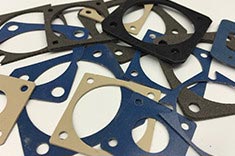EMI Shielding Products
- Custom Gasket Fabrication
- Connector Gaskets
- Bonded O Ring
- Custom Gaskets
- Conduct-O-Knit Knitted Wire Mesh
- Conduct-O-Seal Combo Gasket
- Conduct-O-Elastomer
- Conduct-O-Seal Oriented Wire in Silicone Gasket Material
- Conduct-O-Mesh Tape
- Conduct-O-Foam
- Conduct-O-Bond
- Optical Filters For Electronic Displays
- Shielded Vent Panels
- ESC Board Level Shielding
- 300 Series
Tips for Choosing Shielding Materials
EMI and RFI shielding are essential components of modern-day electronics. There is no electronic device on the markets, whether it is a navigation system or a medical device that isn’t directly affected by EMI. To meet the ever-changing demands of the electronics industry, EMI and RF shielding are constructed from different materials. How do you know which one is right for you? Below, we want to go over some of the most used materials and their differences. Hopefully, this makes designing easier for you.

Tin plating is commonly used because it offers exceptionally high corrosion protection to prevent rusting. It is also known to have great solderability across the entire surface, which makes it easy to attach the shield to different traces on the surface board.
Pre-tin plated steel is probably your best low-cost solution that does not compromise on performance. It works well in lower KHz range frequencies, as well as lower frequencies within the GHz range. Carbon steel is known to have a permeability value that is in the low hundreds range. This provides low-frequency magnetic shielding that is not matched in other materials like aluminum, alloy 770, and copper.
Copper is incredibly reliable. This is especially the case when working with radio frequencies. Copper absorbs both magnetic and radio waves. It is one of the best materials for attenuating electrical and magnetic waves.
EMI RFI Shielding
Copper alloy 770 is commonly referred to as alloy 770. It is a mixture of nickel, copper, zinc alloys. This alloy has the best corrosion resistance properties of all other RFI shielding materials.
Related Reading:
- Design Considerations for EMI Shielded Combo Strip GasketsWhen you need an excellent choice for applications that demand high conductivity, resiliency with sealing solutions of knitted wire mesh, your first consideration should be EMI shielded combo strip gaskets.
- The Importance of EMI Shielding for Modern Electronics
- Important RF Shielding Terminology



